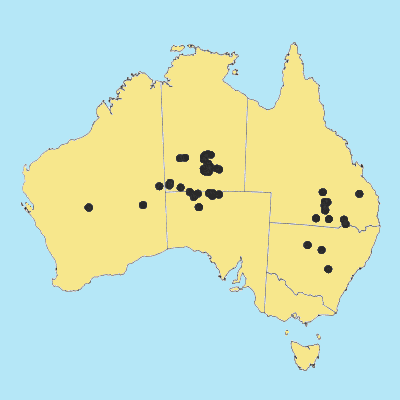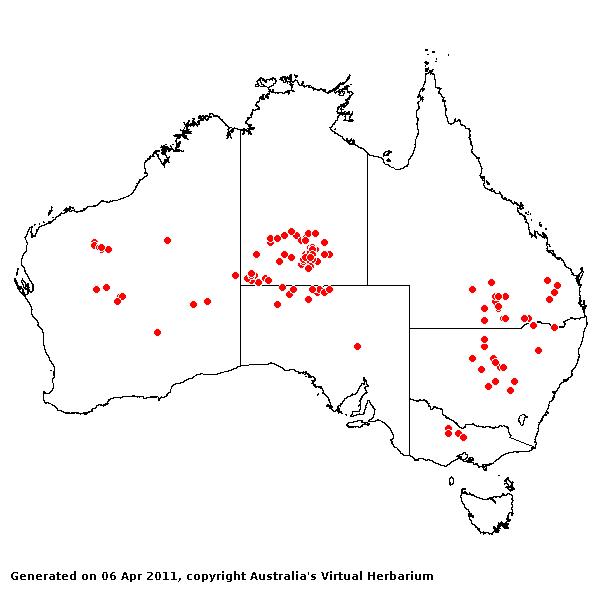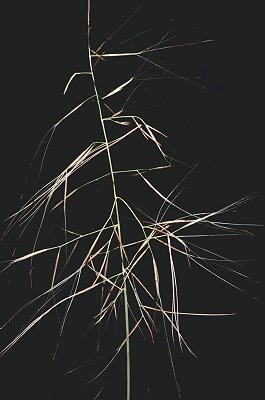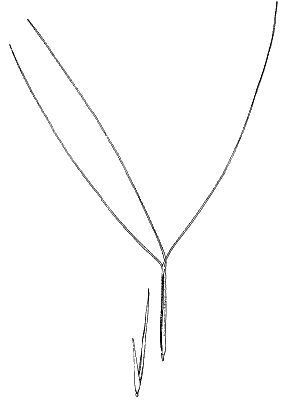Aristida obscura Henrard. Meded.
Rijks. Herb. Leiden
54A: 385 (1927).
Classification. (GPWG 2001) : Subfamily
Aristidoideae. Aristideae.
Type of Basionym or
Protologue Information: HT: D. W. J. Hatten 29, May 1900, Australia: New South Wales: Bourke Dist.: North Western
Plains (L-926.156–886 (photo, BRI); IT: K, NSW).
.
Key references
(books and floras): [1981] M.Lazarides in J.Jessop (ed)., Flora of
Central Australia (451), [2002] D.Sharp & B.K.Simon, AusGrass,
Grasses of Australia, [2006] J.Jessop, G.R.M.Dashorst, F.M.James, Grasses
of South Australia (326), [2008] S.W.L.Jacobs, R.D.B.Walley &
D.J.B.Wheeler, Grasses of New South Wales (130).
Illustrations:
[1983] J.C.Tothill & J.B.Hacker, Grasses of Southern Queensland
(106(22)), [2005] K.Mallet (ed.), Flora of Australia 44B: Poaceae 3
(Fig. 18C), [2006] J.Jessop, G.R.M.Dashorst, F.M.James, Grasses of South
Australia (326, Fig. 260), [2008]
S.W.L.Jacobs, R.D.B.Whalley & D.J.B.Wheeler, Grasses of New South Wales,
4th edn (130).
Derivation: L.
dark. Spikelets dark-colored.
Habit. Perennial.
Culms 25–40 cm tall. Mid-culm internodes pubescent. Lateral branches branched.
Leaf-sheaths antrorsely scabrous, hairy. Ligule a fringe of hairs, 0.5 mm long.
Leaf-blades straight, flat, 10–25 cm long, 2–3 mm wide. Leaf-blade surface
scabrous, indumented.
Inflorescence.
Inflorescence compound, a panicle. Panicle ovate, loose, 7–15 cm long, 5–10 cm
wide.
Spikelets.
Spikelets pedicelled. Fertile spikelets 1-flowered, comprising 1 fertile
floret(s), without rachilla extension, lanceolate, terete, 13–21 mm long.
Glumes. Glumes
similar, thinner than fertile lemma. Lower glume lanceolate, membranous,
keeled, 1-keeled, 1 -nerved. Lower glume apex awned. Upper glume lanceolate,
13–21 mm long, membranous, keeled, 1-keeled, 1 -nerved. Upper glume surface
asperulous or scabrous. Upper glume apex entire, awned.
Florets.
Fertile lemma 11–14 mm long, without keel, 3 -nerved. Lemma apex awned, 3
-awned. Median (principal) awn without a column. Lateral lemma awns present.
Palea without keels. Anthers 3. Grain 6–10 mm long.
Continental
Distribution: Australasia.
Australian
Distribution: Western Australia, Northern Territory, South Australia,
Queensland, New South Wales.
Western
Australia: Helms, Carnarvon, Austin. Northern
Territory: Central Australia North, Central
Australia South. South
Australia: North-western. Queensland:
Burnett, Darling Downs, Maranoa, Warrego. New
South Wales: Central-Western Slopes, North-Western Plains, South-Western
Plains, North Far Western Plains.
Notes.
A. obscura differs from A. behriana by the more open panicles,
the tuberculate-spiny lemmas and compressed peduncles.
Concentrated in two
main areas in central Australia
and another in an area from Chareville to Cobar. In all mainland states except Victoria. Eucalyptus
and mulga (Acacia aneura) communities on loams and red earths. Flowering
and fruiting November to September.





